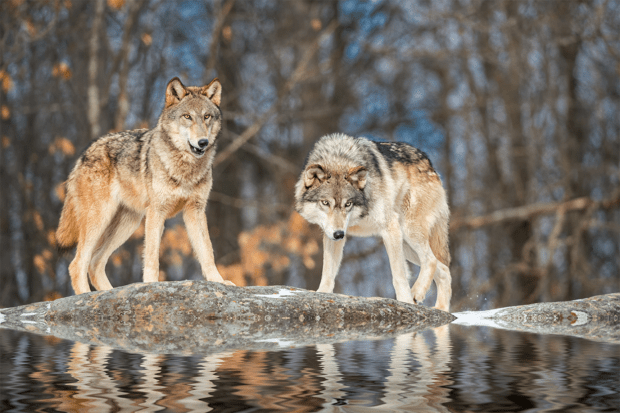We have much more to do and your continued support is needed now more than ever.
Launching A Lawsuit to Protect Wildlife in Minnesota

Threats to Minnesota
Tar sands oil is not like regular oil. It’s a heavy, peanut butter-like substance that has to be mined, often times by stripping away earth, in the productive evergreen forests of Canada. Since it’s so thick, it cannot be transported via pipe unless it’s diluted with a toxic gas condensate. Even then, it must be transported at high pressure, which caused the substance to heat up. There is some indication this heating process and the uneven pressure of the tar sands mixture places undue stress on pipes.
When the substance does spill, the volatile mixture separates, with disastrous consequences for wildlife and habitat. The diluent gases off into the air, producing a toxic cloud of benzene and other chemicals. The sticky tar sands sinks to the bottom of wetlands, rivers, streams and other water bodies, attaching itself to the bottom.
As such, a tar sands spill is almost impossible to clean up. This was tragically demonstrated in the 2010 spill of tar sands into the Kalamazoo River, which killed or injured thousands of birds, mammals, turtles and other wildlife. Forty miles of the river was sullied. Today, the river is still polluted by the spill despite multiple dredging attempts and over $1.2 billion in clean-up efforts. A smaller tar sands spill in Arkansas has left a residential neighborhood uninhabitable.
The Alberta Clipper line crosses or runs near countless Minnesota lakes, ponds, wetlands and streams. It terminates in Superior, Wisconsin, after it crosses the Saint Louis River, a tributary of Lake Superior. From there, the tar sands makes its way onto a web of pipelines that flow through the Great Lakes region and beyond. More tar sands means a higher risk of a tar sands spill, with likely permanent impacts for the wildlife and habitat in the affected area.
Tar sands oil also produces much more carbon pollution than regular oil, and increasing tar sands pipeline capacity leads to more of its use. This fuels the climate change that is likely leading dramatic declines in moose populations in Minnesota and other northern states.
A Need for a “Hard Look”
The State Department’s backroom approval of more tar sands into Minnesota should be reversed by a judge.
Before more tar sands oil comes into our state and region, the State Department should follow the law and make good on its commitment to have a public review process that will look at all the impacts of the project and determine if the project is necessary.
Minnesotans deserve a chance to have some fundamental questions asked and answered before we put our resources at risk. What will more tar sands mean for wildlife in the state? What is being done to protect our natural resources and habitat from spills? Is more tar sands needed, or is Minnesota just a pass-through for tar sands export? Do we have safer, cleaner energy choices that could meet our needs with less risk?
The law requires a “hard look” at the impacts of major projects like the doubling of tar sands into Minnesota. The State Department has instead turned a blind eye. MCF is asking a judge to make sure that hard look takes place so we don’t put wildlife in harm’s way.
About the Author
 Gary Botzek is the Executive Director of the Minnesota Conservation Federation. The Federation is interested, concerned, and active in local, state, regional, and national public policies that affect wildlife and the habitat that supports our wildlife and fisheries. Pipelines running through our northern hunting and fishing grounds is of major concern and interest to our members who hunt and fish.
Gary Botzek is the Executive Director of the Minnesota Conservation Federation. The Federation is interested, concerned, and active in local, state, regional, and national public policies that affect wildlife and the habitat that supports our wildlife and fisheries. Pipelines running through our northern hunting and fishing grounds is of major concern and interest to our members who hunt and fish.





















